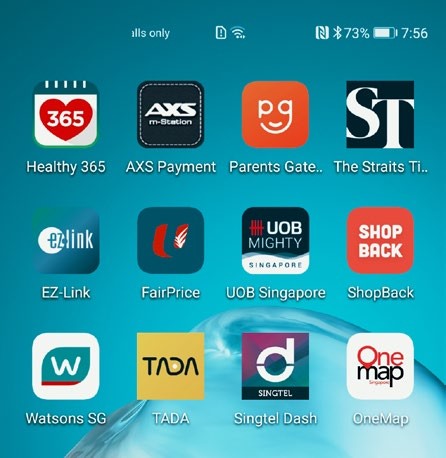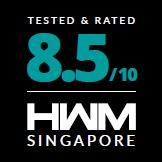Huawei P40 Pro.


Huawei P40 Pro.
AT A GLANCE
PROCESSOR Kirin 990 5G
DISPLAY 6.58-inch, OLED, 2,640 x 1,200 pixels, 90Hz
CAMERA 50-megapixel, f/1.9, OIS 40-megapixel ultra-wide-angle 12-megapixel telephoto, OIS 3D depth sensor
STORAGE 256GB internal, proprietary expandable (up to 256GB)
PRICE $1,488
The Android-based Huawei P40 Pro is here to improve upon its photography features, despite lacking Google’s Play Store and having to convince everyone that it’s a flagship phone worthy of being among the people’s top choice in 2020.
The P40 Pro’s Quad-Curve Overflow Display features rounded glass edges to emulate a near-overflowing glass of water with its almost bezel-less appearance. Its 6.58-inch OLED display features refresh rates up to 90Hz and a resolution of 2,640 x 1,200 pixels for a pretty vibrant and smooth experience, but what makes the display stand out more is that Huawei’s EMUI interface is now actually well-designed enough to appear crisp and sharp to the eye. Apps and videos render quite nicely on the device, befitting its flagship status.

The P40 Pro’s “Ultra Vision Leica Quad Camera system features a main 50MP shooter boasting one of the largest sensors in a modern smartphone.
The P40 Pro runs on the Android 10 operating system with Huawei’s latest EMUI 10.1 skin sitting on top of the OS. If you’re coming from an earlier version of EMUI, it’s worth noting that Huawei has finally brought Dark Mode interface to its users as a standard. The new 10.1 update also brings some hidden software enhancements such as a HD video calling feature embedded in the dailer called MeeTime. This function is similar to Apple’s FaceTime.

EMUI 10.1 skin sits on top of of the P40 Pro’s Android base operating system.
Huawei has vastly expanded its proprietary app store (AppGallery) offerings, becoming the world’s third-largest app store, on top of a growing list of core Singapore-centric apps within the consumer banking and consumer transport space. Even if the app is not available via AppGallery, we found Huawei’s Phone Clone app does a really good job at transferring apps from another Android phone. Plus, it’s pretty easy to get around most of the non-GMS restrictions through web apps. There are a few sticky issues with popular apps like Netflix and Spotify, but Huawei has come a long way since the Mate 30 was launched last year.
Of course, the meat of the P-series has always been its camera, and the P40 Pro gets a beefy upgrade that Huawei is calling its Ultra Vision Camera. This primary shooter is a large 1/1.28-inch, 50-megapixel sensor with an RYYB colour filter array. It has Optical Image Stabilisation (OIS) as well as Full Pixel Octa PD AutoFocus, which means that every single pixel on the sensor supports Dual Pixel Diode AF.

Rapid localization of apps is a key strategy for Huawei to boost usability of HMS Android devices like the P40 Pro.
It’s going to be really hard picking out image quality improvements year on year, considering that you’re really only getting a slight overall bump from a 10MP shot to a 12MP shot due to the 4-in-1 pixel binning. However, what immediately jumps out compared to the P30 Pro, is that colours do appear more neutral without looking overly saturated or processed. This is even more evident during night shots, as the P40 Pro renders the night sky more naturally and with less noise.
Supporting the main camera is a 40-megapixel ultra-wide Cine Camera (similar to last year’s Mate 30 Pro), a 12-megapixel telephoto with 5x optical and 10x hybrid zoom, and a 3D depth sensor. This telephoto lens also has OIS as well as a 50x digital zoom, like the P30 Pro. If you’re looking for 100x zoom capabilities, it will only be available on the ultra-premium P40 Pro+ due later in the year.

CONCLUSION
Excellent camera improvements against all odds; a device that will only get better as HMS matures.
On the software side of things, there are some new computational photography tricks up its sleeve that Huawei is calling AI Golden Snap, which allows you to remove passers-by photobombing your shots and reflections on glass. They do work to an extent, but not as automatic as it seems. So, while it can save an otherwise ruined shot in a pinch, don’t start snapping with the expectations that it will work magic on every picture.

Powering the Huawei P40 Pro is a Kirin 990 5G chipset, which has already seen in the Mate 30 Pro 5G and mate Xs, so there’s nothing new here. The P40 Pro’s performance is almost on par with devices carrying the Qualcomm Snapdragon 865 chipset, even if it’s not the top in charts for gaming apps.
As a whole, the P40 Pro is a flagship device that manages to deliver further improvements to its already outstanding camera performance, while retaining good battery uptime. Whether one should get it, depends on how much you prioritise Google Mobile Services as a must have. While its $1,488 retail price is in-line with many other flagship devices today, there are still inconveniences to put up with for a phone without GMS. Mind you, those inconvenience are disappearing by the day as Huawei ramps up HMS core services and AppGallery improvements, but we were hoping for a more generous offering to entice users to bear with its growing pains.























